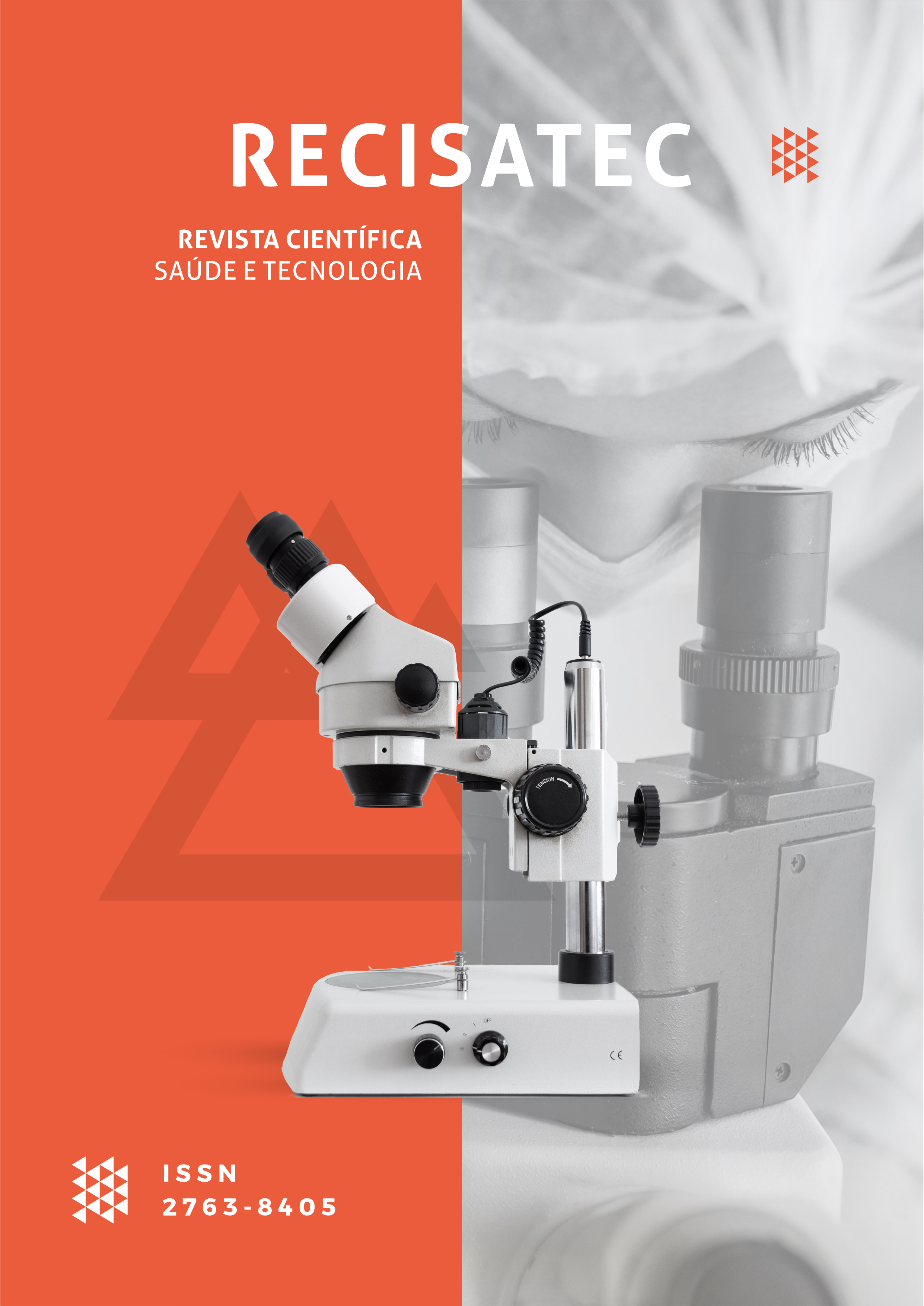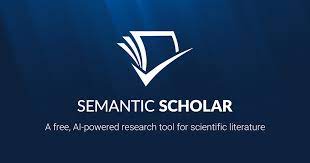BENEFÍCIOS DA TÉCNICA DE ULTRAFILTRAÇÃO COM BALANÇO ZERO (Z-BUF) DURANTE A CIRCULAÇÃO EXTRACORPÓREA EM PACIENTES SUBMETIDOS À CIRURGIA CARDÍACA
DOI:
https://doi.org/10.53612/recisatec.v2i10.194Palavras-chave:
Circulação extracorpórea, Cirurgia cardíaca, Ultrafiltração com balanço zero (Z-BUF), Mediadores inflamatóriosResumo
A circulação extracorpórea (CEC) consiste na substituição temporária do coração e dos pulmões por uma máquina durante alguns procedimentos cirúrgicos. O uso de soluções cristaloides para o preenchimento e retirada de ar do circuito de CEC acarreta na hemodiluição do paciente, gerando complicações como redução dos níveis de hemoglobina e diminuição do transporte e oferta de oxigênio, havendo a necessidade de utilização de técnicas de ultrafiltração. A ultrafiltração reduz a formação de edema e necessidade de transfusões sanguíneas, além de controlar a reação inflamatória sistêmica mediante a remoção de agentes pró-inflamatórios. Na ultrafiltração com balanço zero (Z-BUF) uma solução é infundida no circuito de CEC e um volume igual de fluido é removido via coluna de ultrafiltração. Este processo permite que pequenas moléculas sejam removidas do sangue, enquanto células e grandes proteínas permanecem na circulação. A Z-BUF foi desenvolvida para reduzir mediadores inflamatórios associados à CEC, embora atualmente auxilie na correção de anormalidades eletrolíticas que ocorrem durante a cirurgia. O trabalho elucida os benefícios da Z-BUF utilizada em pacientes submetidos à cirurgia cardíaca. Observa-se que a Z-BUF ajuda na redução de fatores inflamatórios, atenua a perda sanguínea no pós-operatório e, concomitantemente, diminui o tempo de ventilação mecânica e de permanência na UTI, além de manter um equilíbrio eletrolítico mais adequado e fisiológico para o organismo.
Downloads
Referências
ABCMED. Circulação extracorpórea – entendendo como ela funciona e quando deve ser usada. Disponível em: https://www.abc.med.br/p/exames-e-procedimentos/1330903/circulacao-extracorporea-entendendo-como-ela-funciona-e-quando-deve-ser-usada.htm, 2018. Acesso em: 17 jul. 2022.
ALLEN M, SUNDARARAJAN S, PATHAN N, BURMESTER M, MACRAE D. Anti-inflammatory modalities: their current use in pediatric cardiac surgery in the United Kingdom and Ireland. Pediatr. Crit. Care. Med., v. 10, n. 3, p. 341-45, 2009. DOI: https://doi.org/10.1097/PCC.0b013e3181a3105d
ALSTON RP, CORMACK L, COLLINSON C. Metabolic acidosis developing during cardiopulmonary bypass is related to a decrease in strong ion difference. Perfusion., v. 19, n. 3, p. 145-52, 2004. DOI: https://doi.org/10.1191/0267659104pf751oa
BANDO K, VIJAY P, TURRENTINE MW, SHARP TG, MEANS LJ, ENSING GJ, et al. Dilutional and modified ultrafiltration reduces pulmonary hypertension after operations for congenital heart disease: a prospective randomized study. J. Thorac. Cardiovasc. Surg., v. 11, n. 3, p. 517-27, 1998. DOI: https://doi.org/10.1016/S0022-5223(98)70313-7
BANNER W. JR., TIMMONS O D, VERMOND D D. Advances in the critical care of poisoned paediatric patients. Drug. Saf., v. 10, n. 1, p. 83-92, 1994. DOI: https://doi.org/10.2165/00002018-199410010-00006
BENTSEN G, STUBHAUG A, EIDE PK. Differential effects of osmotherapy on static and pulsatile intracranial pressure. Crit. Care. Med., v. 36, n. 8, p. 2414-9, 2008. DOI: https://doi.org/10.1097/CCM.0b013e318180fe04
BIERER J, STANZEL R, HENDERSON M, SETT S, HORNE D. Ultrafiltration in Pediatric Cardiac Surgery Review. World. J. Pediatr. Congenit. Heart. Surg., v. 10, n. 6, p. 778-88, 2019. DOI: https://doi.org/10.1177/2150135119870176
BOODHWANI M, WILLIAMS K, BABAEV A, GILL G, SALEEM N, RUBENS FD. Ultrafiltration reduces blood transfusions following cardiac surgery: A meta-analysis. Eur. J. Cardiothorac. Surg., v. 30, n. 5, p. 892-7, 2006. DOI: https://doi.org/10.1016/j.ejcts.2006.09.014
BRANCACCIO G, VILLA E, GIROLAMI E, MICHIELON G, FELTRI C, MAZZERA E, et al. Inflammatory cytokines in pediatric cardiac surgery and variable effect of the hemofiltration process. Perfusion., v. 20, n. 5, p. 263-8, 2005. DOI: https://doi.org/10.1191/0267659105pf816oa
BRAT DJ, BELLAIL AC, VAN MEIR EG. The role of interleukin-8 and its receptors in gliomagenesis and tumoral angiogenesis. Neuro. Oncol., v. 7, n. 2, p. 122-33, 2005. DOI: https://doi.org/10.1215/S1152851704001061
CASTRO RP, CROTI UA, MACHADO MN, MURILLO HG, RINCON OYP, POLICARPO SR, et al. Ultrafiltração convencional com modificação técnica no tratamento cirúrgico dos defeitos cardíacos congênitos. Rev. Bras. Cir. Cardiovasc., v. 21, n. 1, p. 42-9, 2006. DOI: https://doi.org/10.1590/S0102-76382006000100009
CHEW MS. Does modified ultrafiltration reduce the systemic inflammatory response to cardiac surgery with cardiopulmonary bypass? Perfusion., v. 19, supl. 1, p. 57-60, 2004. DOI: https://doi.org/10.1191/0267659104pf719oa
COSKUN I, ÇÖLKESEN Y, DEMIRTÜRK OS, TÜNEL HA, GÜLCAN Ö, TÜRKÖZ R. The effects of perioperative ultrafiltration on postoperative outcomes in dialysis‐dependent patients undergoing open heart surgery. Turk. J. Thorac. Cardiovasc. Surg., v. 21, n. 3, p. 603-609, 2013. DOI: https://doi.org/10.5606/tgkdc.dergisi.2013.7133
DEHAKI MG, NIKNAM S, AZARFARIN R, BAKHSHANDEH H, MAHDAVI M. Zero-Balance Ultrafiltration of Priming Blood Attenuates Procalcitonin and Improves the Respiratory Function in Infants After Cardiopulmonary Bypass: A Randomized Controlled Trial. Artif. Organs., v. 0, p. 1-6, 2018.
GARG P, BISHNOI AK, PATEL K, WADHAWA V, SURTI J, SOLANKI A, et al. Hemodiafiltration-A Technique for Physiological Correction of Priming Solution in Pediatric Cardiac Surgery: An In Vitro Study. Artif. Organs., v. 41, n. 8, p. 773-8, 2017. DOI: https://doi.org/10.1111/aor.12830
GHOLAMPOUR DEHAKI M, NIKNAM S, AZARFARIN R, BAKHSHANDEH H, MAHDAVI M. Zero-Balance Ultrafiltration of Priming Blood Attenuates Procalcitonin and Improves the Respiratory Function in Infants After Cardiopulmonary Bypass: A Randomized Controlled Trial. Artif. Organs., v. 43, n. 2, p. 167-72, 2019. DOI: https://doi.org/10.1111/aor.13325
GHOLAMPOUR DEHAKI M, NIKNAM S, BAKHSHANDEH H, AZARFARIN R. Zero-balance ultrafiltration of the priming blood modifies the priming components and improves the clinical outcome in infants undergoing cardiopulmonary bypass: A randomized controlled trial. Artif. Organs., v. 44, n. 3, p. 288-95, 2020. DOI: https://doi.org/10.1111/aor.13559
HIRAMATSU T, IMAI Y, KUROSAWA H, TAKANASHI Y, AOKI M, SHINOKA T, et al. Effects of dilutional and modified ultrafiltration in plasma endothelin-1 and pulmonary vascular resistance after the Fontan procedure. Ann. Thorac. Surg., v. 73, n. 3, p. 861-5, 2002. DOI: https://doi.org/10.1016/S0003-4975(01)03564-0
KANDIL OA, MOTAWEA KR, DARLING E, RILEY JB, SHAH J, ELASHHAT MAM, et al. Ultrafiltration and cardiopulmonary bypass associated acute kidney injury: A systematic review and meta-analysis. Clin. Cardiol., v. 44, n. 12, p. 1700-1708, 2021. DOI: https://doi.org/10.1002/clc.23750
KARAMLOU T, SCHULTZ JM, SILLIMAN C, SANDQUIST C, YOU J, SHEN I, et al. Using a miniaturized circuit and an asanguineous prime to reduce neutrophil-mediated organ dysfunction following infant cardiopulmonary bypass. Ann. Thorac. Surg., v. 80, n. 1, p. 6-14, 2005. DOI: https://doi.org/10.1016/j.athoracsur.2005.02.030
KEENAN HT, THIAGARAJAN R, STEPHENS KE, WILLIAMS G, RAMAMOORTHY C, LUPINETTI FM. Pulmonary function after modified venovenous ultrafiltration in infants: a prospective, randomized trial. J. Thorac. Cardiovasc. Surg., v. 119, n. 3, p. 501-507, 2000. DOI: https://doi.org/10.1016/S0022-5223(00)70129-2
KEIDAN I, AMIR G, MANDEL M, MISHALI D. The metabolic effects of fresh versus old stored blood in the priming of cardiopulmonary bypass solution for pediatric patients. J. Thorac. Cardiovasc. Surg., v. 127, n. 4, p. 949-52, 2004. DOI: https://doi.org/10.1016/S0022-5223(03)01316-3
KIZILTEPE U, UYSALEL A, CORAPCIOGLU T, DALVA K, AKAN H, AKALIN H. Effects of combined conventional and modified ultrafiltration in adult patients. Ann. Thorac. Surg., v. 71. n. 2, p. 684-93, 2001. DOI: https://doi.org/10.1016/S0003-4975(00)02518-2
LIU J, JI B, LONG C, LI C, FENG Z. Comparative effectiveness of methylprednisolone and zero-balance ultrafiltration on inflammatory response after pediatric cardiopulmonary bypass. Artif. Organs., v. 31, n 7, p. 571-575, 2007. DOI: https://doi.org/10.1111/j.1525-1594.2007.00423.x
LONG DM, JENKINS E, GRIFFITH K. Perfusionist techniques of reducing acute kidney injury following cardiopulmonary bypass: an evidence-based review. Perfusion., v. 30, n. 1, p. 25-32, 2015. DOI: https://doi.org/10.1177/0267659114544395
MALUF MA, MANGIA C, BERTUCCEZ J, SILVA C, CATANI R, CARVALHO W, et al. Estudo comparativo da ultrafiltração convencional e associação de ultrafiltração convencional e modificada na correção de cardiopatias congênitas com alto risco cirúrgico. Rev. Bras. Cir. Cardiovasc., v. 14, n. 3, p. 221-36, 1999. DOI: https://doi.org/10.1590/S0102-76381999000300007
MARENZI G, LAURI G, GRAZI M, ASSANELLI E, CAMPODONICO J, AGOSTONI P. Circulatory response to fluid overload removal by extracorporeal ultrafiltration in refractory congestive heart failure. J. Am. Coll. Cardiol., v. 38, n. 4, p. 963-8, 2001. DOI: https://doi.org/10.1016/S0735-1097(01)01479-6
MARTIN DP, GOMEZ D, TOBIAS JD, SCHECHTER W, CUSI C, MICHLER R. Severe hyperkalemia during cardiopulmonary bypass: etiology and effective therapy. World. J. Pediatr. Congenit. Heart. Surg., v. 4, n. 2, p. 197-200, 2013. DOI: https://doi.org/10.1177/2150135112467213
MULLANE R, FRISTOE L, MARKIN NW, BRAKKE TR, MERRITT-GENORE HM, SIDDIQUE A, et al. Zero balance ultrafiltration using dialysate during nationwide bicarbonate shortage: a retrospective analysis. J. Cardiothorac. Surg., v. 14, n. 1, p. 163, 2019. DOI: https://doi.org/10.1186/s13019-019-0986-8
PALLADINO MA, BAHJAT FR, THEODORAKIS EA, MOLDAWER LL. Anti-TNF-alpha therapies: the next generation. Nat. Rev. Drug. Discov., v. 2, n. 9, p. 736-46, 2003. DOI: https://doi.org/10.1038/nrd1175
PICKERING JW, JAMES MT, PALMER SC. Acute kidney injury and prognosis after cardiopulmonary bypass: a meta-analysis of cohort studies. Am. J. Kidney. Dis., v. 65, n. 2, p. 283-293, 2015. DOI: https://doi.org/10.1053/j.ajkd.2014.09.008
POND SM. Extracorporeal techniques in the treatment of poisoned patients. Med. J. Aust., v. 154, n. 9, p. 617-22, 1991. DOI: https://doi.org/10.5694/j.1326-5377.1991.tb121225.x
POULLIS M, WARWICK R, SASTRY P, FONTAINE E. Hypertonic cardiopulmonary bypass primes and endothelial damage. J. Extra. Corpor. Technol., v. 40, n. 4, p. 236-40, 2008.
SAATVEDT K, LINDBERG H, GEIRAN OR, MICHELSEN S, PEDERSEN T, SEEM E, et al. Ultrafiltration after cardiopulmonary bypass in children: effects on hemodynamics, cytokines and complement. Cardiovasc. Res., v. 31, n. 4, p. 596-602, 1996. DOI: https://doi.org/10.1016/S0008-6363(95)00237-5
SONG LO, YINGLONG LI, JINPING LI. Effects of zero-balanced ultrafiltration on procalcitonin and respiratory function after cardiopulmonary bypass. Perfusion., v. 22, n. 5, p. 339-43, 2007. DOI: https://doi.org/10.1177/0267659107086726
SOUZA DD, BRAILE DM. Avaliação de nova técnica de hemoconcentração e da necessidade de transfusão de hemoderivados em pacientes submetidos à cirurgia cardíaca com circulação extracorpórea. Rev. Bras. Cir. Cardiovasc., v. 19, n. 3, p. 287-294, 2004. DOI: https://doi.org/10.1590/S0102-76382004000300006
SOUZA MHL, ELIAS DO. Fundamentos de circulação extracorpórea. 2. ed. Rio de Janeiro: Centro Editorial Alfa Rio, 2006.
STRIKER CW, WOLDORF S, HOLT D. Modification of sodium, glucose, potassium, and osmolarity in packed red blood cells and fresh frozen plasma using a desktop hemoconcentrator setup. J. Extra. Corpor. Technol., v. 44, n. 2, p. 60-5, 2012.
UGAKI S, HONJO O, KOTANI Y, NAKAKURA M, DOUGUCHI T, OSHIMA Y, et al. Ultrafiltration of priming blood before cardiopulmonary bypass attenuates inflammatory response and maintains cardiopulmonary function in neonatal piglets. ASAIO. J., v. 55, n. 3, p. 291-5, 2009. DOI: https://doi.org/10.1097/MAT.0b013e31819b00c2
WALPOTH BH, AMPORT T, SCHMID R, KIPFER B, LANZ M, SPAETH P, et al. Hemofiltration during cardiopulmonary bypass: quality assessment of hemoconcentrated blood. Thorac. Cardiovasc. Surg., v. 42, n. 3, p. 162-9, 1994. DOI: https://doi.org/10.1055/s-2007-1016480
WALPOTH BH, VON ALBERTINI B. Ultrafiltration in cardiac surgery. Journal of Extra‐Corporeal Technology., v. 16, n. 2, p. 68‐72, 1984.
WATANABE N, KOBAYASHI Y. Selective release of a processed form of interleukin 1 alpha. Cytokine., v. 6, n. 6, p. 597-601, 1994. DOI: https://doi.org/10.1016/1043-4666(94)90046-9
YNDGAARD S, ANDERSEN LW, ANDERSEN C, PETTERSON G, BAEK L. The effect of modified ultrafiltration on the amount of circulating endotoxins in children undergoing cardiopulmonary bypass. J. Cardiothorac. Vasc. Anesth., v. 14, n. 4, p. 399-401, 2000. DOI: https://doi.org/10.1053/jcan.2000.7944
ZHAO J, LONG C, FENG ZY, YANG JG, LIANG FL. Effects on inflammatory responses of zero-balanced ultrafiltration of stored blood priming solution in infants cardiopulmonary bypass. Chin. J. Clin.Thorac. Cardiovasc. Surg., v. 12, p. 396-398, 2005.
ZHOU G, FENG Z, XIONG H, DUAN W, JIN Z. A combined ultrafiltration strategy during pediatric cardiac surgery: a prospective, randomized, controlled study with clinical outcomes. J. Cardiothorac. Vasc. Anesth., v. 27, n. 5, p. 897-902, 2013. DOI: https://doi.org/10.1053/j.jvca.2013.01.006
ZHOU W. The new face of anaphylatoxins in immune regulation. Immunobiology., v. 217, n. 2, p. 225-34, 2012. DOI: https://doi.org/10.1016/j.imbio.2011.07.016
ZHU X, JI B, WANG G, LIU J, LONG C. The effects of zero-balance ultrafiltration on postoperative recovery after cardiopulmonary bypass: a meta-analysis of randomized controlled trials. Perfusion., v. 27, n. 5, p. 386-92, 2012. DOI: https://doi.org/10.1177/0267659112450182
Downloads
Publicado
Como Citar
Edição
Secção
Categorias
Licença
Direitos de Autor (c) 2022 RECISATEC - REVISTA CIENTÍFICA SAÚDE E TECNOLOGIA - ISSN 2763-8405

Este trabalho encontra-se publicado com a Licença Internacional Creative Commons Atribuição 4.0.
Os direitos autorais dos artigos/resenhas/TCCs publicados pertecem à revista RECISATEC, e seguem o padrão Creative Commons (CC BY 4.0), permitindo a cópia ou reprodução, desde que cite a fonte e respeite os direitos dos autores e contenham menção aos mesmos nos créditos. Toda e qualquer obra publicada na revista, seu conteúdo é de responsabilidade dos autores, cabendo a RECISATEC apenas ser o veículo de divulgação, seguindo os padrões nacionais e internacionais de publicação.





















































